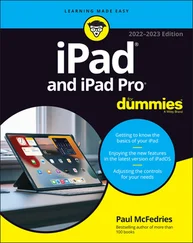To select those messages that have a star, pull down the Select list and click Starred.
To select those messages that have no star, pull down the Select list and click Unstarred.
 Starring a message acts as a visual reminder that the message is special in some way. To star a message, click the Star icon that appears to the right of the message check box.
Starring a message acts as a visual reminder that the message is special in some way. To star a message, click the Star icon that appears to the right of the message check box.
Dealing with the Onslaught
Do you receive a lot of email? No, really, I mean do you receive a lot of email? I thought so. Welcome to life in the 21st century! Email is a massive part of everyone's life these days, but the in-your-faceness of email doesn't mean that you have to let email run your life. Gmail offers quite a few tools for making email manageable. No, Gmail can't reduce the sheer volume of messages you receive every day, but you can use some techniques and tricks to put email in its place.
You probably don't want your messages gumming up your inbox forever, so Gmail gives you a fistful of ways to deal with the clutter. Select the message or messages you want to work with, and then click one of the following icons (see Figure 2-15):
Archive: Moves the message to the All Mail label. (To see this label, click More on Gmail's main menu — the one running down the left side of the screen — and then click All Mail.)
Report Spam: Moves the message to the Spam label. (To see this label, click More on Gmail's main menu and then click Spam.)
Delete: Moves the message to the Bin label. (To see this label, click More on Gmail's main menu and then click Bin.)
Move To: Moves the message to a label you specify. If the label doesn't exist yet, click Create New in the dialog box that appears. You can also drag the message from the inbox and drop it on another label on the main menu.
For more ways to get your Inbox squeaky clean, see “ Muting a conversation” and “ Snoozing a conversation” later in this chapter.
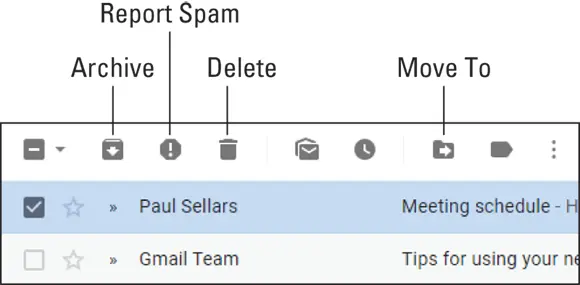
FIGURE 2-15:Commands you can run to move the selected message out of the inbox.
Earlier in this chapter, I talk about how Gmail eschews the usual email folders in favor of labels, which look and act very much like folders. However, labels are much more flexible than folders because you're free to apply multiple labels to any message. Whatever label you apply to a message, you can see that message and all the other messages that have the same label by clicking the label name on Gmail's main menu.
Gmail, bless its do-it-myself heart, often labels messages for you. For example, newly received messages automatically get the Inbox label, messages you're working on get the Drafts label, messages you've dispatched get the Sent label, and messages you've deleted get the Bin label. Gmail can also apply a label to an incoming message based on the sender, the subject, or the body. For example, a message from your boss or your G Suite administrator might get the Important label.
How do labels help you deal with your daily deluge? Essentially, labels enable you to categorize your emails in a way that makes it easy to find the ones you want to work with. If your inbox is overstuffed with a few hundred or a few thousand messages, scrolling through such a seemingly endless list to find a message from your boss can be both time-consuming and frustrating. But if you know that either you or Gmail have slapped the Important label on that message, you can head for the Important label on the main menu and the message will be there — no doubt much easier to find because that label will have comparatively fewer messages.
Putting a label on a message
To apply a label to a message, first select the message and then use any of the following techniques:
To remove the Important label, click More (the three vertical dots) and then click Mark as Not Important.
To apply the Important label, click More and then click Mark as Important.
To apply the Starred label, click the Star icon that appears to the right of the message check box.
To apply the Snoozed label (which I discuss in more detail a bit later in this chapter), click Snooze. (Refer to Figure 2-20.)
To apply the Mute label (which I discuss any minute now), click More (the three vertical dots) and then click Mute.
To apply the Bin label, click Delete. (Refer to Figure 2-15.)
To apply the Spam label, click Report Spam. (Again, refer to Figure 2-15.)
To apply any other label (including labels you make up yourself, as I discuss next), click Labels, select the check box of each label you want to use (see Figure 2-16), and then click Apply.
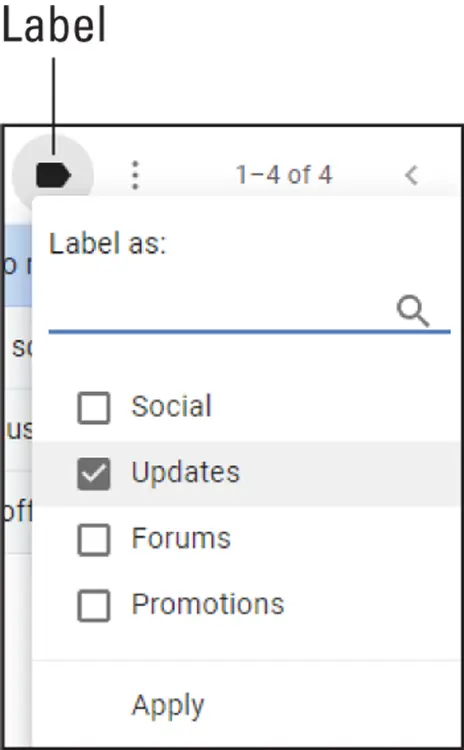
FIGURE 2-16:Click Labels and then select the label (or labels) you want to apply to the message.
Labels become truly useful when you make up your own. What labels do you need? That depends on the types of email you get, the people you correspond with, and so on. You can make up labels for people, projects, teams, departments, your current mood — whatever makes sense to you and whatever fits with your email workload.
Here are the steps to follow for creating a custom label:
1 Start a new label.Gmail gives you two main ways to get the label-making process off the ground:Select any message and then choose Labels ⇒ Create New.Click More in the main menu's label list running down the left side of the screen, and then click Create New Label at the very bottom of the expanded list.Gmail displays the New Label dialog box. (See Figure 2-17.)
2 Enter the label name in the Please Enter a New Label Name text box.
3 Click Create.Gmail creates your label and adds it to the label list.
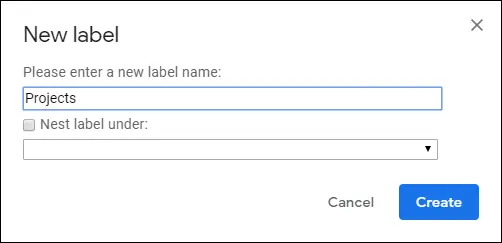
FIGURE 2-17:Use the New Label dialog box to create a custom label for your messages.
In the same way that you can have subfolders within a folder, you can have sublabels with a label. However, rather than use the awkward term sublabel, Gmail calls a label-within-a-label a nested label . So, for example, you could create a top-level (Gmail calls it a parent ) label named Projects and then create nested labels for each project you're working on. Similarly, you could forge a Teams label and then populate it with nested labels for each team you're a member of.
Assuming that you've already created the parent label you want to use, here are the steps to follow to add a nested label:
1 Start a new label.Select any message and then choose Labels ⇒ Create New.Click More in the main menu's label list running down the left side of the screen, and then click Create New Label at the very bottom of the expanded list.Gmail conjures up the New Label dialog box.
2 Enter a name for the nested label.
3 Select the Nest Label Under check box.
4 Use the Nest Label Under drop-down list to select the parent label you want to use.Figure 2-18 shows an example.
5 Click Create.Gmail creates the label and nests it under the parent label.
Читать дальше
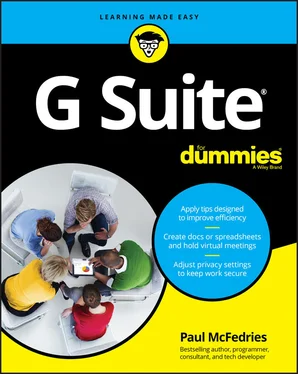
 Starring a message acts as a visual reminder that the message is special in some way. To star a message, click the Star icon that appears to the right of the message check box.
Starring a message acts as a visual reminder that the message is special in some way. To star a message, click the Star icon that appears to the right of the message check box.






